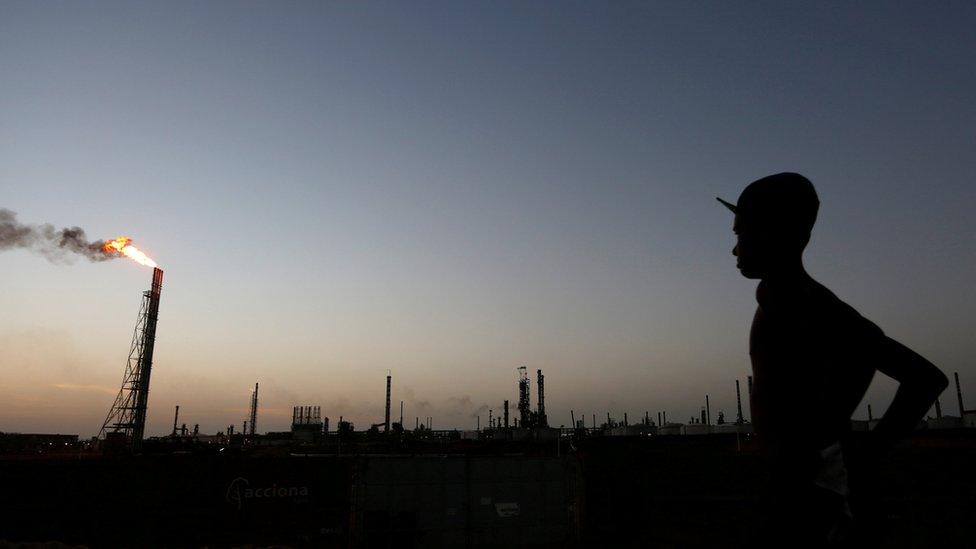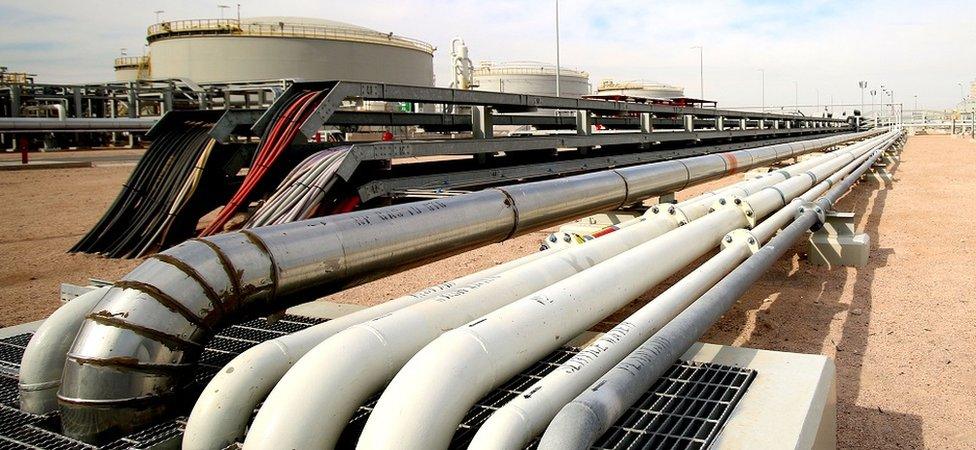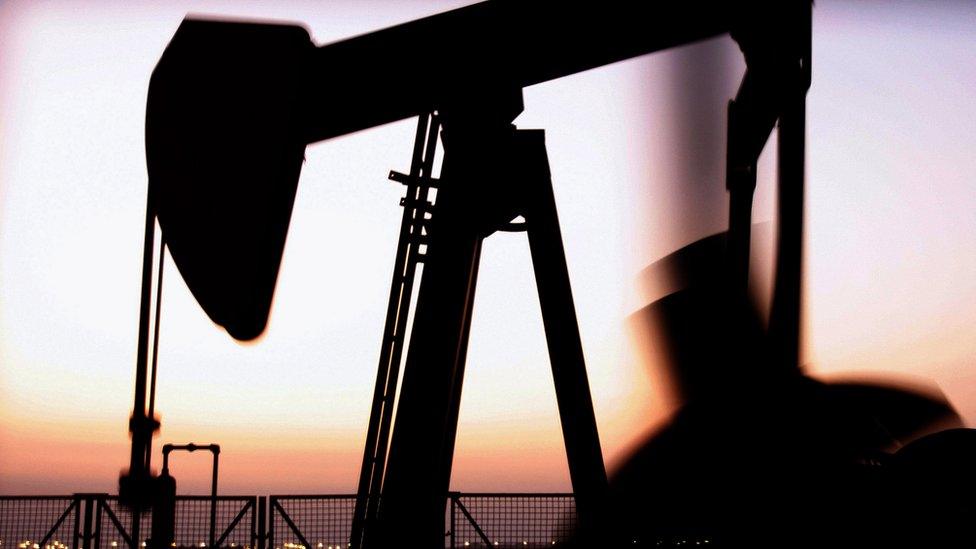Oil price rises as Russia and Saudi Arabia back supply cut
- Published

Opec and non-Opec countries first agreed a cut in production last year
Oil prices have risen more than 3% after Saudi Arabia and Russia said a deal to cut production should be extended until March next year.
A barrel of Brent Crude jumped to $52.52 following a meeting in China between the two countries.
The oil cartel Opec, which is dominated by Saudi Arabia, and non-Opec producers led by Russia have been attempting to use the output cut to drive up prices.
However, the US is not included and its high output could undermine efforts.
Both Brent and US crude lost some of their earlier gains on Monday to trade 2.6% higher at $52.17 and $49.23 respectively.
Following the meeting in Beijing, Saudi Energy Minister Khalid al-Falih and his Russian counterpart Alexander Novak said: "The two ministers agreed to do whatever it takes to achieve the desired goal of stabilising the market and reducing commercial oil inventories to their five-year average level."
Mr Falih added: "We've come to the conclusion that the agreement needs to be extended."
The two countries produce 20 million barrels of crude oil a day - about one-fifth of global consumption - and other oil-producing nations are expected to follow their lead over cuts.
Russian President Vladimir Putin said extending output cuts for a further nine months was the right thing to do: "We support the proposal."

Analysis

By Andrew Walker, BBC economics correspondent
Opec, along with the non-member countries such as Russia that are co-operating with the group, face a dilemma.
A central part of their problem is the US shale oil business and the competition to the established industry it has come to represent in the past decade.
After the price of oil started to plunge three years ago, Opec - in particular Saudi Arabia - stood by, hoping the financial pressure on US shale would force it to cut back.
It didn't really work, so Opec and a few other producers cut production hoping to revive prices. In the process they created more space for shale producers.
The cut hasn't really worked. Prices now are about the same level as when they did the deal. Extending it might help if, as Russia and Opec hope, it leads to lower stocks of crude oil. But it is good news for their rivals in the US.

Price wobble
An agreement to cut production was reached in September last year, but the deal was due to run out later this year.
Under the agreement, Opec countries were to cut production by 1.2 million barrels a day, while the Russian-led non-Opec nations agreed to reduce output by 600,000 barrels a day.
Earlier this month, oil prices hit a five-month high, but have wobbled over fears that producers may be unwilling to hold their nerve and limit production.
The US has also refused to cut production and its own output has increased by about 10% since last year.
Virendra Chauhan, an analyst at Energy Aspects, said: "Opec and Russia recognise that in order to get the market back on their side they will need 'shock and awe' tactics where they need to go above and beyond a simple extension of the deal. The market will also be looking at export cuts and not just production cuts, which is what is required to rebalance the market."
In recent years Saudi Arabia has been in a pitched battle with the US to try to reduce the price of oil.
It has been concerned with the increase in US shale gas production, and so increased its oil output to drive down prices in a bid to make shale gas exploration economically unattractive.
However, last year Saudi officials agreed to the first cut in production for eight years.
- Published30 November 2016
